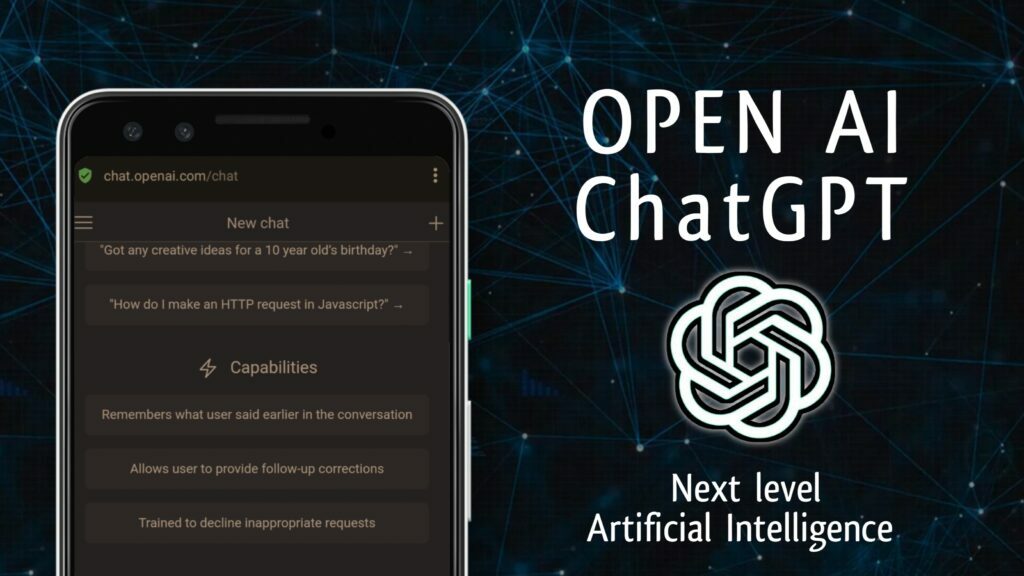
ChatGPT is a cutting-edge language generation model by OpenAI that uses deep learning techniques to generate human-like responses to text-based prompts. It has been trained on large amounts of internet text data and has a wide range of applications including chatbots, language translation, and text summarization.
What is ChatGPT and how does it work?
ChatGPT is a language model developed by OpenAI. It is a variant of the GPT (Generative Pretrained Transformer) architecture, which is a type of transformer-based neural network. ChatGPT is trained on large amounts of text data to predict the next word or token in a sequence, given the context of the previous words or tokens. The model uses this training to generate coherent and contextually appropriate responses to natural language inputs. It does this by encoding the input into a continuous representation, and then using this representation to generate the next word or token in the sequence. The process is repeated until the model has generated a complete response. The accuracy of the model’s responses depends on the quality and diversity of the training data, as well as the size of the model and the computational resources used to generate the response.
How does ChatGPT compare to other language models?
ChatGPT is a highly advanced language model, and compared to other language models, it has some key advantages and disadvantages.
Advantages:
- Large-Scale Training: ChatGPT is trained on massive amounts of text data, making it capable of generating responses with a high degree of coherence and consistency.
- Generative Capabilities: ChatGPT is a generative model, meaning it can generate new responses based on the input it receives.
- Contextual Awareness: ChatGPT is trained to understand the context of a conversation, making it capable of generating contextually appropriate responses.
Disadvantages:
- Computational Requirements: Generating responses using ChatGPT requires substantial computational resources, making it difficult to deploy in resource-constrained environments.
- Bias: Like any machine learning model, ChatGPT can reflect the biases present in its training data.
- Limitations: Despite its high level of accuracy, ChatGPT is not perfect and can still generate responses that are incorrect, inappropriate, or nonsensical.
In comparison to other language models, ChatGPT stands out for its high level of accuracy, but its high computational requirements can be a drawback. Additionally, it is important to be aware of the potential for bias in the model’s responses.
Can ChatGPT be used for practical applications?
Yes, ChatGPT can be used for various practical applications. Some of the most common use cases include:
- Chatbots: ChatGPT can be used to develop chatbots that can interact with users in natural language and provide information, assistance, or support.
- Language Translation: ChatGPT can be used to generate translations between languages, though it may require additional fine-tuning or training to achieve high accuracy.
- Question Answering: ChatGPT can be used to answer questions in natural language, drawing information from its training data or external sources.
- Content Generation: ChatGPT can be used to generate articles, summaries, or other forms of text content based on specific prompts or topics.
- Sentiment Analysis: ChatGPT can be fine-tuned for sentiment analysis tasks, such as determining whether a given piece of text is positive, negative, or neutral.
Overall, the versatility and generative capabilities of ChatGPT make it a useful tool for a wide range of applications in natural language processing and AI.
How accurate is ChatGPT in understanding and generating human-like responses?
ChatGPT is capable of generating highly human-like responses, but the accuracy of its understanding and response generation depends on several factors, including:
- Training Data: The quality and diversity of the training data significantly impact the accuracy of ChatGPT’s responses. If the training data is biased or limited in scope, the model’s responses will reflect these limitations.
- Model Size: Larger models have the capacity to generate more complex and accurate responses, but also require more computational resources.
- Fine-Tuning: Fine-tuning the model on task-specific data can improve its accuracy for specific use cases.
- Context: ChatGPT is trained to understand context, but its ability to generate contextually appropriate responses can be limited if the input it receives is ambiguous or lacks sufficient context.
Despite these limitations, ChatGPT can still generate highly human-like responses in many cases. However, it is important to be aware of its limitations and to critically evaluate its responses to ensure they are appropriate and accurate.
What ethical concerns surround the use of AI language models like ChatGPT?
The use of AI language models like ChatGPT raises a number of ethical concerns, including:
- Bias: AI models, including ChatGPT, can reflect the biases present in their training data. This can lead to the perpetuation of harmful stereotypes and discrimination, as well as reinforce existing power imbalances.
- Misinformation: AI models can generate responses that are inaccurate, misleading, or harmful. This can have serious consequences, especially if the responses are taken as truth without further verification.
- Privacy: The vast amount of data used to train AI models, including ChatGPT, raises privacy concerns around the collection, storage, and use of personal information.
- Responsibility: AI models like ChatGPT can generate responses that are inappropriate or harmful, but it can be difficult to determine who is responsible for these outcomes. This raises questions about accountability and the need for responsible use of AI technologies.
- Job Displacement: The increasing use of AI models in industries such as customer service and content creation has the potential to displace human workers, raising broader societal and ethical questions about the future of work.
Overall, the use of AI language models like ChatGPT raises important ethical concerns that need to be carefully considered and addressed in order to ensure responsible and beneficial use of these technologies.
Can ChatGPT generate responses in multiple languages?
Yes, ChatGPT is capable of generating responses in multiple languages, including English, Spanish, French, German, Chinese, Japanese, and many more. However, the model’s performance and accuracy may vary depending on the language and the complexity of the task.
for more article visit techdrago.com
For experiencing this wonderful AI click here.


